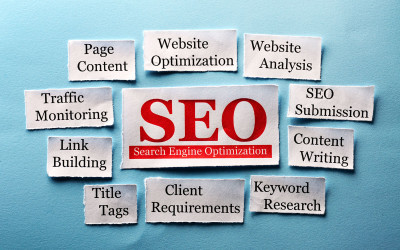Marketing is one of the most critical elements of operation for any business whether emerging or established. According to renowned authorMilan Kundera, “Business has only two functions – marketing and innovation.” This statement essentially sums up what matters most to sustainable business operations. Within marketing, the most vital factor is measuring the return on investment (ROI).
The task of measuring ROI is nothing short of a challenge. Moreover, not every marketing campaign has the same impact. So, how do businesses divert resources towards increasing marketing ROI is the million-dollar question. In this article, we are listing 6 tips that can increase the effectiveness of marketing efforts that businesses undertake.
What Is ROI in Marketing?
The Return on Investment (ROI), as the name indicates, is a performance measure which helps evaluate the effectiveness of any investment, allowing numerous outcomes to be ascertained. It applies similarly to marketing. The measure enables companies to compare how much they invested against what they earned as a result. This calculation determines whether or not a marketing campaign was a success especially in terms of revenue generated.
The basic formula for ROI involves the subtraction of costs incurred from the overall profit generated. The value obtained, also known as net profit, is then divided by the total costs. The result is then multiplied by 100 to give a percentage value. In equation terms, the process can be denoted as follows:
So, as an example, if $2,000 were invested in a campaign which resulted in sales of $5,000, the ROI comes out to be 150%. You know therefore that your marketing effort was a resounding success which can eventually mean that the company can replicate it or initiate other similar campaigns to derive similar results.
Improving Marketing ROI
Although the measurement of marketing ROI can be tweaked to include numerous other metrics as well, the fundamental equation focuses around two key factors, i.e. costs and income. You must either increase revenue or cut expenses to improve marketing ROI. You might want to focus on cutting costs if your marketing efforts are ineffective. Otherwise, you should concentrate on raising your revenue. These two factors go side by side in influencing ROI.
Here are some of the ways in which marketing ROI can be increased significantly:
1. Start by Establishing SMART ROI Goals
The foundation of goal-setting has been ascertained to be the SMART principle. Any objective that is set needs to comply with five essential elements that determine how effective or achievable it is going to be. Through this technique, companies can know exactly what they stand for, the tangible milestones that need to be achieved and how they’ll be applied. Setting SMART goals matters a lot as it keeps expectations and efforts in check.
Setting a ROI goal can help you improve your marketing returns. You can create a strategy for achieving your goal and monitoring your progress with the aid of a clearly defined objective. Make your ROI target SMART, or specific, measurable, achievable, relevant, and time-bound, when you set it. With these parameters, goals can be laid out for respective teams to divide and assign responsibilities as it is not the job of the marketing department alone.
- Specific: Your goal should be defined, such as “raise ROI by 25 percent,” rather than a generalized one like “improve ROI.”
- Measurable: Make sure you can gauge your progress toward your goal by making it measurably. Use the appropriate data collecting and reporting techniques.
- Achievable: Your goals won’t help you much if they aren’t achievable. Ensure that you can realistically reach your goals before setting ambitious ones.
- Relevant: Your ROI objectives should be compatible with your broader company objectives. For instance, collecting more Facebook likes isn’t a useful aim until it helps you raise sales if your main goal is to increase sales.
- Time-bound: Set a deadline for yourself and try to stick to it. Setting deadlines for your goals will motivate you to reach them on time.
2. Devise a Strategy to Track ROI
You won’t know if you’ve successfully enhanced your marketing ROI if you aren’t tracking it. To increase your ROI, you must develop a strategy for monitoring it as well. Choose the metrics for digital, conventional or other forms of marketing that you should monitor.
82% of marketers indicate that their executives want every campaign assessed, yet less than a third can accurately calculate the ROI of each channel, according to the State of Marketing Measurement survey. Additionally, only 48% of marketers use web analytics tools to gauge the success of marketing campaigns.
Simply increasing revenues or cutting costs will not make a difference unless you are keeping track of whether changes are actually occurring at the end of the day.
Sales, website traffic, and leads are a few popular metrics, but the best ones depend on your objectives and the kind of campaign you’re conducting. Additionally, you must ensure that you have the appropriate tools for tracking ROI.
Google Analytics is one of the best tools for tracking returns that is currently available. There are other tools from established players that come with their own distinguishing features. Companies can use any platform of their choice as long as they are efficient.
You must set up monitoring for the conversions you wish to monitor, whether they be sales, leads, or another sort of conversion, in order to track ROI using Google Analytics or any other relevant tool that is available.
Businesses should focus efforts on knowing that the campaign they are undertaking should eventually fulfill goals for each metric specifically. Ecommerce reports allow you to monitor online sales. You’ll need to create targets for different conversions.
Once you have conversion data, you can analyze it to determine the relative contributions of different channels and campaigns to your conversions.
Pick Conversions from the report’s main menu, then select Conversions > Multi-Channel Funnels > Assisted Conversions. You can view conversion information for each channel using this. To view the steps that led to conversions, you may also look at the Top Conversion Paths report.
3. Pick the Parameters That Make a Difference
Be cautious when selecting the metrics to track if you want to boost your marketing ROI. Make sure these indicators actually demonstrate progress toward your most essential objectives and are not merely aesthetic measurements with little practical relevance. The appropriate metrics to monitor depend on the campaign’s objectives.
You may wish to monitor indicators like the following if your objective is to enhance income or sales:
- Conversion rate: The proportion of leads or site visitors who convert is known as the conversion rate.
- Cost per acquisition:The price you pay to bring on a new customer.
- Customer lifetime value:It is the total value of a customer to your business during the course of their relationship with you.
Tracking metrics like these may be beneficial if your objective is to raise brand recognition.
- Direct traffic: It refers to the volume of visitors who arrive at your website directly, such as by entering its URL into their browser’s address bar.
- Referral traffic: This is the quantity of people who access your website through links on other websites.
- Mentions on Social Media: The frequency with which customers mention your name, brand, product, or service on social media.
How you approach your objectives is influenced by the ROI indicators you monitor for digital marketing. In order to know how to increase ROI in digital marketing, it is important to measure the appropriate KPIs.
4. Incorporate the Use of Modern Technologies
By 2024, the marketing automation segment, which is one of the most pertinent technologies for marketing, was worth $6.4 billion. There’s a reason why this market is expanding so quickly: by improving the effectiveness and precision of marketing operations, these technologies can help marketers achieve more with less and maximize ROI.
Tools for marketing automation can handle routine chores and analyze data to help you make improvements to your efforts. For instance, email automation software can send emails to prospects at preset intervals or in response to certain actions they take on your website.
These automation technologies can save your staff a lot of time because they don’t have to send these emails by hand. Numerous other aspects, such as audience segmentation, lead tracking, and content personalization, might benefit from marketing automation. All in all, these tools are designed to optimize marketing ROI to a significant extent.
5. Focus Efforts on Driving Sales
The information revolution that the world is currently experiencing has given rise to a new type of customer, usually called an ‘informed buyer’. With the internet now globally and remotely accessible, people can simply go online and search for any bit of information regarding a product or service that they are interested in.
Moreover, individuals today make purchases not just on what they see but based on blogs, reviews, recommendations and advice they receive on social media amongst many other factors. As a business, the promising aspect of this is that the same information is also available to you for relevant utilization. The part that most businesses find challenging is to translate this data in a manner where it can generate revenue.
Statistics show that almost 95% of data available within a company is not put to work effectively. At the same time, 39% marketers today believe that there are loopholes within their data collection mechanisms as it is not collected in real-time. An identical percentage also asserts that they are unable to convert this data, even when available, into actionable insights.
6. Experimenting Is Vital to Increasing ROI
Frequent experimentation and the usage of the results to enhance your efforts are two of the finest strategies to raise marketing ROI. To find out what works best for your audience and goals, try out various channels and tweak your campaigns. A/B testing is a great approach to evaluate and improve your marketing campaigns.
It entails making many versions of a piece of material, such as an advertisement, email, or web page, and displaying each version to a different randomly selected audience. You monitor clicks, sales, or any other digital marketing ROI data that are crucial to your campaign throughout the test. You evaluate your results at the conclusion of the experiment to determine which version performed better.
Then you may permanently use the version that performed the best and move on to testing a different element of your campaign or content. You can use Google Optimize, a free tool provided by Google, to carry out A/B tests and other experiments.
You may raise marketing ROI steadily over time by conducting tests and improving your efforts. There are numerous advantages involved in this process. Firstly, companies can get a better idea of the things that work or don’t work in their respective target markets. At the same time, it also opens new avenues for future campaigns while giving rise to more innovative ideas.
Conclusion
Marketing ROI forms the basis of judging the effectiveness of particular marketing campaigns undertaken by a business. At the end of the day, advertising is used to increase awareness and ultimately drive more sales. If a marketing effort fails to do so, the underlying concept for it becomes redundant and inefficient. For a business to evaluate whether they achieved certain targets, they need to lay emphasis on tracking and improving marketing ROI.
Although the basic formula for ROI involves a comparison of cost and profit, there are numerous other metrics that influence true returns. Many objectives of marketing can be intangible like brand recognition, recall and awareness seeing as these values don’t have a monetary amount associated with them per se. Therefore, increasing ROI requires extensive efforts from various departments within an organization to achieve the goals that they wish to.
To sum it up, it is vital to make tracking and improvement of ROI the cornerstone of any campaign if you want it to succeed for your business.
- A Step-By-Step Guide to Designing a Mobile-Friendly Website - November 11, 2024
- How Content Marketing Enhances Your Website’s SEO Performance - November 11, 2024
- How to Pick the Perfect Color Scheme for Your Website Design - November 11, 2024







